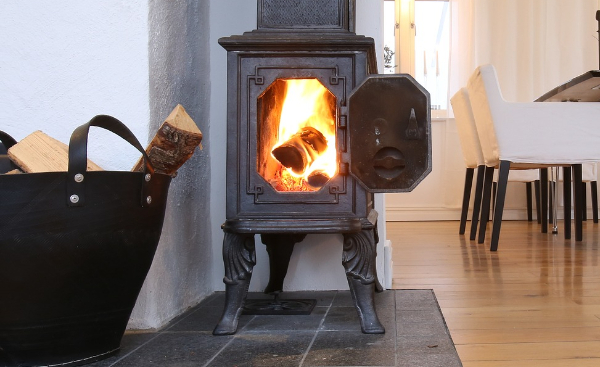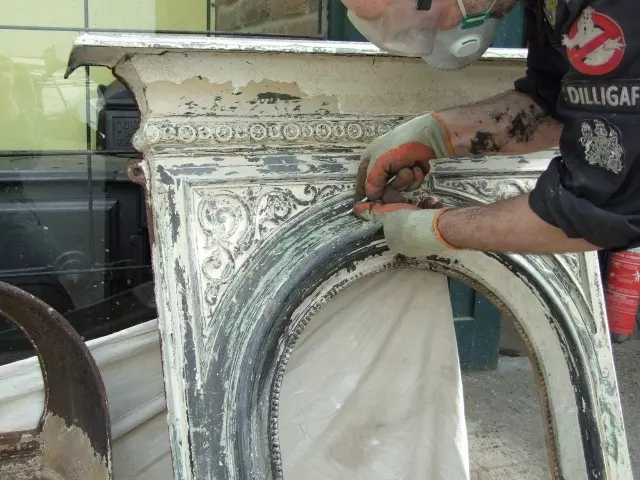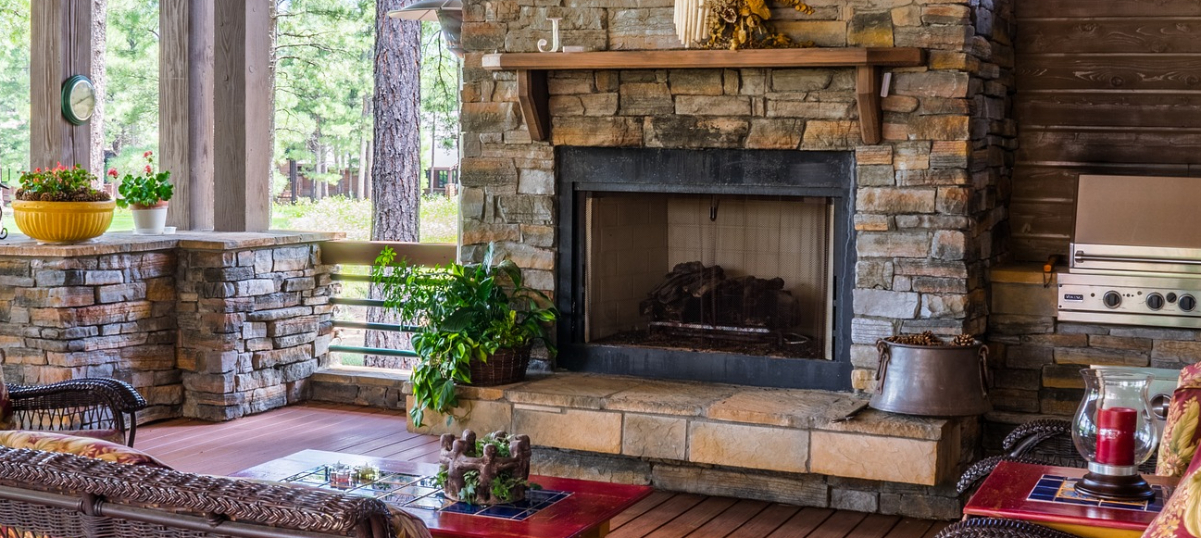Do you have a fireplace that requires restoration? How do you restore a cast iron fireplace? We look at the steps involved in restoring a cast iron fireplace.
How to Restore a Cast Iron Fireplace
Restoring an old cast iron fireplace is no easy task, but it is doable at home as long as you have a little know-how and are prepared for what is ahead of you.
Everything from rust to paint to breaks and faulty parts. It's important to ensure that you are taking complete care of your fireplace as the project moves forward. A lack of attention could cause a calamity that would stop your project from moving forward.
If you need to know where to start, then look no further. Below you will find a thorough guide on how to restore a cast iron fireplace. We've even included tips along the way in case you are having trouble.
Clean rust from the surface
The biggest enemy to the owner of a cast iron fireplace is rust. It's one of the main concerns you should have when taking care of your fireplace throughout your project.
Any moisture that finds its way into contact with your fireplace could cause an unsightly build-up of rust on the cast iron's surface. If you don't do something about this fast, then this can really spoil the look of your project.
Cast iron is astonishingly durable. With the right treatment and care, anyone can easily clean away rust from a cast iron fireplace and make it look as if it is brand new. To clean the rust from a cast iron fireplace, you will need the following tools and materials:
Steel wool
Sanding paper (Medium grit is best)
Rust remover OR white vinegar
A set of protective gloves with a mask
If your fireplace only has small spots of rust here and there, then you may not need all of the items from the above list. Start the process by soaking a cleaning cloth in your white vinegar or rust remover, and try rubbing your cloth on the areas of rust.
In many cases of mild rust to cast iron, this will simply be enough to eliminate the rust and reveal the cast iron fireplace underneath.

If this technique isn't working out and your rust is a bit tougher to remove, then you will need to take advantage of your sandpaper and steel wool.
Just like you did earlier, rub away at the rust using circular motions.
Every so often, wipe the rust with your soaked cloth just to check how the rust is looking.
A wire brush can also come in handy at this stage. It is also very important to remember not to scrub too hard on the metal.
This can leave permanent visible damage to the cast iron fireplace. Once your rust is removed, a different cloth that has been slightly dampened with water to remove any traces of vinegar. Of course, you must now dry your cast iron so that water doesn't cause even more rust to form.
At this stage, most experts would recommend adding a protective layer to the fireplace in order to stop the rust from forming again. Rust-proof metal paint is a great solution to the problem, but black grate polish also works wonderfully.
Strip away old paint layers
The second barrier most people will face when restoring a cast iron fireplace is paint. You might find there has been an accidental spillage down the side of your cast iron or maybe even an incredibly poorly done makeover job. If you are wanting to remove paint from your fireplace, you will need the following:
A towel
White spirit
Steel wool or sandpaper
Cloths
A plastic scraper
Paint stripper with a brush
Protective sheets for your carpet
A set of protective gloves with a mask
Before you begin, you need to think about how much paint you're actually going to be removing here.
Layers upon layers of paint that have built up over many years will take considerable effort to remove. Intricate small paint details within the cast iron itself may be very fiddly to remove.
If at this stage you are thinking that doing this work at home yourself will be too much hard work, then it is possible to pay to get your cast iron fireplace sandblasted.

Steps to take to restore your fireplace:
This is a far more effective way of removing paint from your fireplace, but it will cost much more. Below are the steps you should take to strip the paint from your fireplace:
1) Make sure your carpet or flooring is covered by your protective sheet and put on your pair of gloves and mask
2) Apply the paint stripper to your fireplace according to the instructions on your paint stripper packaging. Ensure it is suitable for use on cast iron.
3) Take some time to allow the paint stripper to do its job.
4) Once the paint stripper has done its work, it is now time to begin scraping the paint away.
5) Use white spirit to wipe away the paint stripper.
6) If there is any paint still remaining on the cast iron fireplace, then repeat the process.
7) Use your steel wool to get into every crevice of the fireplace, but be careful not to damage the surface.
8) Wipe down the entirety of the fireplace with a damp cloth, then completely dry the cast iron. You may now use polish if you see fit.
Repair any cracks
When restoring your cast iron fireplace, you may find some cracks in the surface. This is an issue, but not one that will bring your whole project to a halt.
Cracks in the surface of your fireplace will need a professional to fix. Cast iron does not deal well with high temperatures, so a welder will need to heat up the metal slowly but surely to allow the pieces to be welded back together. This is absolutely not something which can be done at home. Contact a skilled professional in order to avoid any further damage being caused to your fireplace.
Re-paint or polish as desired
When restoring a cast iron fireplace, you do not have to restore the piece to exactly how it would have looked all those years ago. You can give it a different spin and try something new. Once your cast iron fireplace has been completely cleaned and had any rust or paint removed, you can make it look however you want.
With your cast iron fireplace completely bare, you will need to first prime your project, so it can later be painted.
Using an oil-based primer will provide a surface for the paint to bond itself to later but will also prevent the underneath from rusting.
When looking at paints, you should also pick one which is oil-based.
These will reject moisture and are designed for use on metals.

If you can find an oil-based spray paint, then absolutely use this option. This will save you plenty of time in comparison to the use of oil-based paints, which you apply by hand.
Professional cast iron fireplace restoration
As with any DIY job, there is a lot that can go wrong. If some of the methods above are not done correctly, then further damage can be caused. If you are unsure about any part of the process, then it is best that you speak to a professional.
Hiring a tradesperson to restore your fireplace for you is also a great option. Though it may cost more, you will be stress-free and guaranteed to have a brilliant looking end product at the end of the process.
Do you have a period fireplace which needs repair or restoration. If you live in the Hastings and East Sussex area, our expert antique fireplace restoration services can help.
